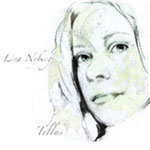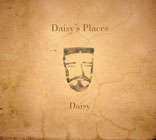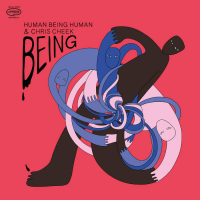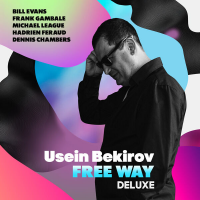Home » Jazz Articles » Multiple Reviews » Lina Nyberg & Daisy: Alternative Sweden
Lina Nyberg & Daisy: Alternative Sweden
Kullhammar, an inside-outside player himself, is using Moserobie to give exposure to Swedish improvisers with different perspectives, whose work is difficult to pigeonhole—like vocalist Lina Nyberg and the cooperative trio Daisy.
 Lina Nyberg
Lina Nyberg
Tellus
Moserobie
2006
On Tellus, Nyberg is joined by Matthias Landaeus (piano), Torbjörn Zetterberg (bass, who's also a member of Kulhammar's own group), and Jon Fält (drums), on ten originals and one Kurt Weill tune, "Surabaya Johnny. The quartet is periodically fleshed out with colorful bass clarinet, tenor saxophone, cello, glockenspiel and contributions from guests including trumpeter Magnus Broo and reedman Frederik Ljungkvist.
A vamp bolstered by melodica and rhythm opens the slinky "Itaparica, Nyberg's husky chanteuse stylings fleshed out by brief melodica and piccolo statements. The music has more collective character than one might expect. Despite Nyberg's weighty presence as vocalist, the strong rhythm section and well integrated woodwind arrangements frequently break from providing color and background support to arresting flashes of independence.
There's something of Carla Bley in the avant-cabaret-jazz approach that Nyberg takes with this group. On "Landala, a brief lyric introduction gives way to Per "Texas Johansson's tenor saxophone solo and Broo's overdubbed multiple trumpet lines. The passage would surely stand on its own, as would the free jazz finale to "Beijing." Prepared piano and roiling low tones introduce "San Saba, until a drunken swagger abruptly asserts itself, before reverting to the background, as Nyberg's wordless chortles take the tune back into stranger regions of her world.
Tellus is, however, rather all-over-the-map. Fragments of singer-songwriter folkiness ("Pincio ) and minimal art rock ("Salwa and "Berlin ) creep in alongside atonal lieder. But Nyberg surely knows how to integrate what she hears, and the process goes beyond her own vocal lines.
 Daisy
Daisy
Daisy's Places
Moserobie
2006
If Tellus is a surefooted stylistic grab bag, then Daisy, the trio of Joakim Rolandson (saxophone), Peter Janson (bass) and Thommy Larsson (drums) is anything but. The saxophone/bass/drums power trio is a time-tested format imbued with rhythmic flexibility and melodic openness—but Daisy doesn't always use it to their advantage.
The opening "Sture & Stina is a bouncy soprano theme over loping rhythm, but while Rolandson's tone is warm and secure, it lacks the openness that the instrument can reveal in other contexts. Static rhythm, combined with a sound that doesn't really open up, makes for a difficult beginning. "Mercato, which follows, is a step in the right direction, with an impressively dense Janson bass solo starting things off. The performance makes good use of steamrolling polyrhythms and acrid, Berber-like soprano textures, but it still seems empty.
"Last Waltz is the kind of tune I wished for more of on this record. Rolandson's alto is keening and dusky, with fragmented bebop phrases echoing Rob Brown somewhere this side of Byron Allen. Coupled with a pliant rhythmic tumult, this makes for the kind of free bop ballad welcome in any set.
The album's crucial weakness is that it doesn't enhance its unashamedly simple tunes with the richness and complexity which attention to texture and scope would deliver. Daisy take a pared-down approach at every turn, removing interest and strength in the process. So tunes like "The Song Of The Pearl That Might Be and "Sture & Stina become mere shells. With time and effort, the shortcomings of Daisy's Places will, hopefully, be overcome, and the blank canvas become more akin to a Franz Kline.
Tracks and Personnel
Tellus
Tracks: Itaparica; Vancouver; Landala; San Saba; Pinico; Yokohama; Salwa; Ponta Delgada; Beijing; Berlin; Surabaya Johnny.
Personnel: Lina Nyberg: vocals, guitar, music box; Matthias Landaeus: piano, melodica, electronics and vocals; Torbjörn Zetterberg: bass and vocals; Jon Fält: percussion and vocals.
Daisy's Places
Tracks: Sture & Stina; Mercato; Last Waltz; The Song Of The Pearl That Might Be; Waltz For Alex; Daisy Dance; In The Palm Of Her Hand.
Personnel: Joakim Rolandson: alto and soprano saxophones; Peter Janson: bass; Thommy Larsson: drums.
Tags
PREVIOUS / NEXT
Support All About Jazz
 All About Jazz has been a pillar of jazz since 1995, championing it as an art form and, more importantly, supporting the musicians who make it. Our enduring commitment has made "AAJ" one of the most culturally important websites of its kind, read by hundreds of thousands of fans, musicians and industry figures every month.
All About Jazz has been a pillar of jazz since 1995, championing it as an art form and, more importantly, supporting the musicians who make it. Our enduring commitment has made "AAJ" one of the most culturally important websites of its kind, read by hundreds of thousands of fans, musicians and industry figures every month.



















